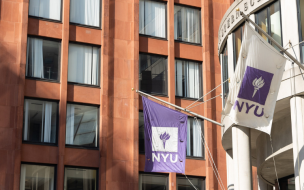I was especially surprised at the costs for preparing for the GMAT, the standardized test required by virtually all MBA programs. I was determined to spend as little money as possible on GMAT prep – and you can too.
Here are my top tips to keep your costs down, and to help you ace the exam.
1. Join a free resource hub and forum. I found the answers to all of my questions on the BeatTheGMAT website and forums. There you’ll find study plans and well thought-out explanations for pretty much any practice question you'll come across. Cost: $0
Perhaps more importantly, you’ll discover a positive and supportive community where you can commiserate and celebrate. Studying for the GMAT can be a lonely road, so being able to talk to people who know exactly what you’re going through is invaluable.
2. Sign up for daily emails. BeatTheGMAT and other forums like GMAT Club let you sign up for daily emails with math and verbal questions – and links to the forum threads where you can debate the answers – which help keep you in GMAT mode. Cost: $0
3. Get by with a little help from your friends. A couple of weeks into my GMAT prep, I fortuitously ran into a friend at a party who had just finished taking the GMAT. We got to talking, and I found out that he had amassed a treasure trove of GMAT prep materials that he then gave me.
While there are mountains of prep materials out there, I found the MGMAT Strategy Guides to be the most helpful. Cost: $0
4. Know what you don’t know. What you choose to focus on is entirely dependent on your weaknesses, which should be identified through a careful study of diagnostic tests. It’s tempting to crash in front of the TV after finishing a 3.5 hour test, but this is your chance to really understand what you’re bad at.
Are you already scoring 80% on the reading comp questions? Then don’t worry about practicing them. Spend your time on areas where you can really move the needle. Cost: $0
5. Figure out ways to cut corners and save time. I recommend MGMAT’s Number Properties guide to anyone and everyone – especially older versions of the guide.
Ultimately, the trick to scoring well on the GMAT is time management, and therefore you should not solve every quant problem the test throws at you. Instead, understand what you need to solve for. Cost: $0
6. While you’re hacking the GMAT, hack the admissions process. Don’t be blind to the admissions process and your applications. At first I figured that if I did well on the GMAT, my undergrad GPA and work history would carry me through. I couldn’t have been more wrong.
Those who have applied to business school within the last five or ten years are surely familiar with the rise of the MBA admissions consultant. What applicants may not be aware of, however, is the vast amount of great advice these consultants give away for free.
Practically all of them provide essay analysis and guidance on their websites, and if you read through enough of them, you can write killer essays. Many were helpful, but mbaMission’s analyses were a godsend.
7. Spend when you need to. I did purchase MGMAT’s Integrated Reasoning guide, but only because that section was newly added at the time.
Was it hard to pay for test prep? Yes. But it was worth it to not risk my entire GMAT score on an unknown factor that I could figure out for just $26. Don’t be too stubborn to pay when you need to. Cost: $26
But this method isn’t for everyone. I was very lucky, but I also think it worked for me because I really wanted to go to business school, and I really wanted to go to Columbia in particular.
I am proof that those who are determined to get into business school at a minimal cost can do it – so long as you give up any chance of a social life.
Total cost to get into business school: $26 (plus applications fees, a bit of my sanity, and probably one girlfriend).
Alex Ellis is an MBA student at Columbia Business School and spent his summer focusing on product at CommonBond, a student lending platform.
RECAPTHA :
69
14
7a
2f







